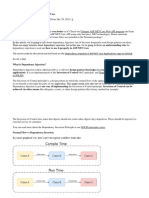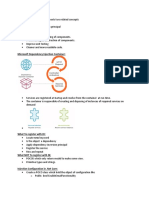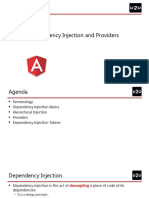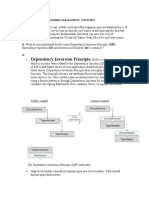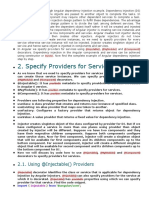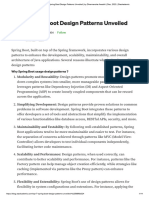0% found this document useful (0 votes)
234 views1 pageDependency Injection in Dot Net Core
Dependency Injection (DI) is a design pattern in ASP.NET Core that promotes loosely coupled and testable code by separating class dependencies from their implementation. It is implemented using the IServiceProvider interface, which allows for service registration and injection into classes. DI can be achieved through Constructor Injection, Method Injection, and Property Injection, each offering unique advantages for maintaining flexible and maintainable code.
Uploaded by
vivek.kurri121Copyright
© © All Rights Reserved
We take content rights seriously. If you suspect this is your content, claim it here.
Available Formats
Download as TXT, PDF, TXT or read online on Scribd
0% found this document useful (0 votes)
234 views1 pageDependency Injection in Dot Net Core
Dependency Injection (DI) is a design pattern in ASP.NET Core that promotes loosely coupled and testable code by separating class dependencies from their implementation. It is implemented using the IServiceProvider interface, which allows for service registration and injection into classes. DI can be achieved through Constructor Injection, Method Injection, and Property Injection, each offering unique advantages for maintaining flexible and maintainable code.
Uploaded by
vivek.kurri121Copyright
© © All Rights Reserved
We take content rights seriously. If you suspect this is your content, claim it here.
Available Formats
Download as TXT, PDF, TXT or read online on Scribd
/ 1







